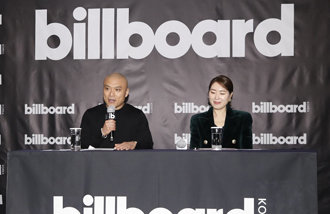Starbucks
Starbucks
Posted April. 19, 2018 07:37,
Updated April. 19, 2018 07:37

Immigrants from Europe who arrived in the New Continent of America bet life-and-death on sperm whaling. Catching a sperm whale meant acquiring ambergris, an ingredient for high-end perfume, and 10,000 liters of oil per whale. Before the “gold rush,” whales were indeed the “gold of the ocean.” Herman Melville, author of the novel Moby-Dick, got his motif from the tragedy of the Whaleship Essex, where most of the sailors died and drifted 7,200 kilometers for 94 days trying to catch a whale. The chief officer in the novel who faces the ocean with a cup of coffee in his hands all the time is Starbuck.
In the port city of Seattle, where whale catcher boats would come in and out, three colleagues from university started a coffee shop in 1971. The name of the coffee shop was “Starbucks” by adding an “s” to Starbuck to make it plural. The three colleagues also demonstrated a logo from a “siren” in a 16th century woodcut made in Norway. This was to imply that their coffee would seduce people with its flavor like the siren from the Greek myth that seduces sailors with sweet songs.
Starbucks, which started out as a neighborhood coffee shop, was recreated when Starbucks Executive Chairman Howard Schultz acquired it in 1987. He opened the coffee shop only in landmarks with high glass ceilings. The logo, which was a naked upper body part of a mermaid transformed into a close-up of a face and contrasting the colors white and green. Employees were not allowed to use perfume for the scent of coffee. Even a painting on the wall is managed by the headquarters. This is the secret behind the success of Starbucks, becoming a global coffee brand.
Starbucks, the symbol of “innovation,” is being condemned these days for an outdated “racial discrimination.” Two black customers were hauled to the police station just because of the skin color and were being rejected to use the restroom. Starbucks announced that it would close 8,000 stores under direct management within the United States for a half day next month and provide education to the entire 175,000 employees to prevent racial discrimination but the boycott against Starbucks is becoming stronger. A Korean customer swallowed down an insult by receiving a cup with slanted eyes six years ago already. Its success, however, appears to reach the stars in Korea. Ever since landing in 1999, Korea has ranked No. 1 in coffee spending, No. 1 in sales compared to population and No. 1 in the number of stores per unit area.
Headline News
- Israel prepares for retaliation against Iran
- Samsung reclaims top spot, surpassing Apple in smartphone market
- 77% of Koreans in 20s and 30s are 'Kangaroo Tribe' due to job crisis
- KBO referees embroiled in controversy over ABS decision concealment
- Inflation, oil price surge put double shock on global economy







